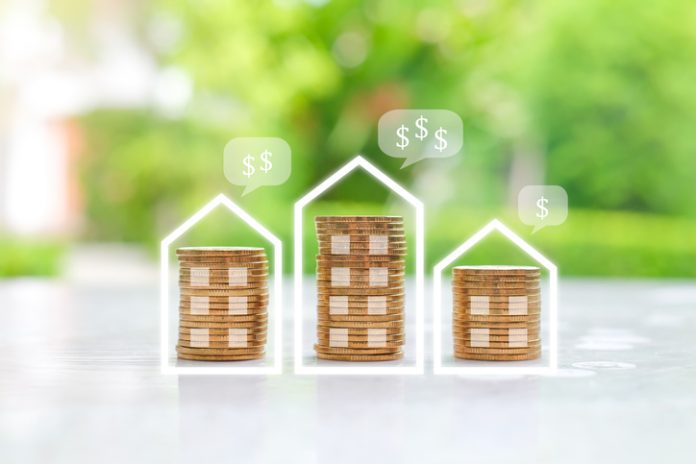Manchester has set an ambitious target of reaching net zero emissions by 2038, a remarkable 12 years ahead of the UK government’s national goal. This commitment to sustainability is transforming the commercial real estate landscape, creating new opportunities for eco-conscious buyers. As the market adapts to these changes, those interested in a Manchester Fast Property Sale may find that environmentally friendly properties are increasingly desirable.
An integral part of this endeavour lies in reducing the carbon footprint of both new and existing commercial properties. This concerted effort towards sustainability not only leads to cost-saving efficiencies on utility bills but also enhances the reputation of businesses.
In this article, we delve into the collaborative approach that landlords and tenants can adopt to embrace sustainability in commercial properties and the practical steps businesses can take to leverage technology and minimise a property’s carbon impact.
Understanding Green Leases
Green leases represent a fusion of sustainability principles into commercial lease agreements, entailing obligations for landlords and tenants to curtail carbon emissions stemming from property development, operation, and occupation.
In the realm of commercial real estate, green leases are gaining prominence, encompassing three main categories: light green, medium green, and dark green.
Light Green Leases
Light green leases incorporate sustainability clauses intended to encourage tenant responsibility for environmental impact. These provisions are typically non-enforceable but serve as a means to promote environmentally responsible behaviours, covering diverse aspects from energy efficiency to waste reduction and water conservation.
The primary objective is to establish a collaborative partnership between landlords and tenants, fostering sustainability and diminishing the overall environmental footprint of a property.
Medium Green Leases
Medium green leases, while legally binding, do not impose onerous or financially burdensome sustainability obligations. They are suitable for parties committed to sustainable practices and willing to set sustainability targets.
Dark Green Leases
Dark green leases, the most rigorous in terms of responsibility, feature legally binding terms that significantly impact both landlords and tenants.
However, tenants may be hesitant to undertake additional responsibilities, which could translate into increased costs for them.
Provisions in Dark Green Leases
Dark green leases encompass several areas of lease agreements, particularly concerning the following:
Consent for Alterations
Tenant-initiated alterations or fit-outs can influence a property’s environmental performance.
Landlords now often evaluate the environmental implications of such proposed alterations before granting consent.
A dark green lease may prohibit alterations that could adversely affect the property’s energy performance rating or mandate the use of sustainable materials.
Rent Review
Landlords may seek higher rents for eco-friendly premises. In response, tenants may request that the impact of energy efficiency enhancements (funded by the tenant) be excluded from rent reviews, as these improvements ultimately increase the property’s value and hypothetical rents.
Service Charge
To enhance energy efficiency and environmental performance in multi-let properties, landlords may desire the authority to make common area improvements.
While this can lead to long-term energy cost reductions, short-term tenants may incur additional costs for these initial works.
Dilapidations
Traditional leases typically require tenants to restore the property to its original condition upon lease termination, irrespective of any sustainable upgrades made during the tenancy.
In contrast, dark green leases promote cooperation between landlords and tenants to determine which tenant-initiated alterations can remain for incoming tenants. This can be facilitated through a schedule of conditions that accounts for sustainable improvements, potentially limiting the tenant’s liability for restoring the property to its original state.
Dark green leases may also allow the transfer of ownership of sustainable upgrades to the landlord or negotiate a reduced dilapidations liability based on the value of such upgrades.
Embracing Sustainable Practices
Green leases serve as a framework for landlords and tenants to collaborate on reducing the environmental impact of commercial properties.
By incorporating sustainable practices into lease agreements, both parties can reap the benefits of cost savings, improved environments, and enhanced reputations as socially responsible entities.
When contemplating a green lease, landlords and tenants should carefully review the lease terms to make sure alignment with their sustainability objectives and assess the costs and benefits of implementing these practices.
Practical Steps to Green-Proof a Property
By harnessing cutting-edge technology, landlords and tenants can implement pragmatic measures to reduce a property’s carbon footprint.
Step 1: Conduct an Energy Audit
Before initiating any modifications to a commercial property, it is essential to comprehend energy consumption and identify areas of inefficiency. This can be accomplished through a professional energy audit or a do-it-yourself assessment. The energy audit pinpoints areas requiring improvement, such as inefficient lighting or HVAC systems.
Step 2: Transition to Energy-Efficient Lighting
A cost-effective strategy to enhance sustainability is switching to energy-efficient lighting. This involves replacing traditional bulbs with LED bulbs or installing motion sensors to automatically turn off lights when not in use. LED bulbs are energy-efficient and have a longer lifespan, resulting in substantial cost savings.
Step 3: Upgrade Heating and Cooling Systems
Heating and cooling systems are large contributors to a property’s energy consumption. Upgrading to high-efficiency HVAC systems, such as furnaces or air conditioners, can yield significant savings and reduce the property’s carbon footprint. Regular maintenance and cleaning of these systems further enhance their efficiency.
Step 4: Insulate the Property
Effective insulation is pivotal for minimising energy waste and improving comfort. Proper insulation helps retain heat during winter and repel it during summer, reducing reliance on heating and cooling systems. Addressing insulation in walls, ceilings, and floors and sealing gaps or cracks is essential.
Step 5: Embrace Renewable Energy Sources
Employing renewable energy sources like solar or wind power reduces reliance on fossil fuels and carbon emissions. Installation of solar panels or wind turbines can generate surplus energy, which can be sold back to the grid, leading to cost savings.
Step 6: Implement Water-Saving Measures
Conserving water in commercial properties reduces waste and lowers water bills. Measures include installing low-flow toilets and faucets, addressing leaks, and adopting drought-resistant landscaping.
Conclusion
In conclusion, adopting green practices in commercial properties offers manifold benefits, from cost savings to environmental stewardship.
Collaborative efforts between landlords and tenants, coupled with technology-driven sustainability measures, can significantly reduce the carbon footprint of commercial properties, aligning with broader sustainability goals.
Disclaimer: This article contains sponsored marketing content. It is intended for promotional purposes and should not be considered as an endorsement or recommendation by our website. Readers are encouraged to conduct their own research and exercise their own judgment before making any decisions based on the information provided in this article.




































